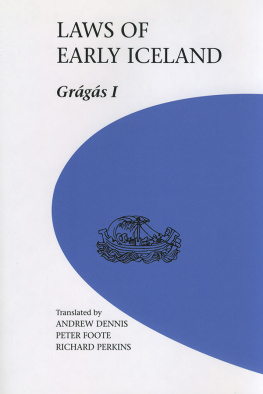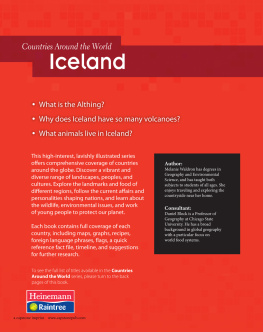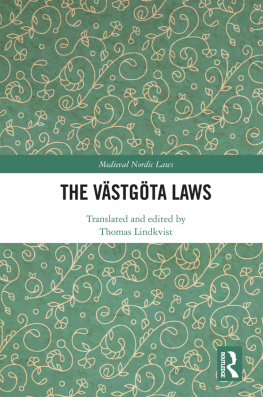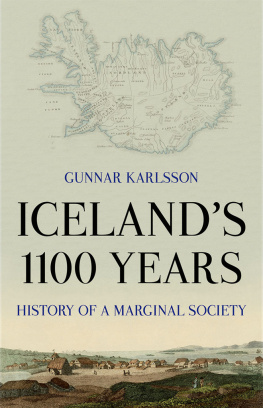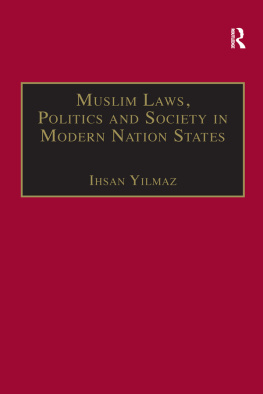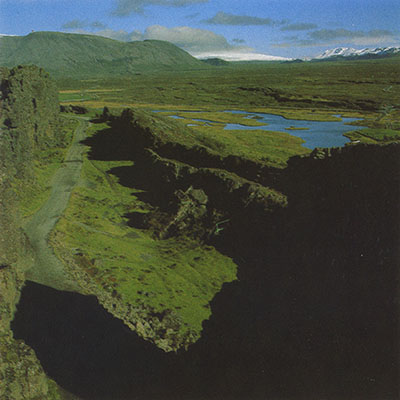Robert J. Glendinning
Vol. III
ingvllr looking northeast from point A on Map II.
Photograph courtesy of Hjlmar R. Bararson
Laws of Early Iceland
GRGS
THE CODEX REGIUS OF GRGS
WITH MATERIAL FROM
OTHER MANUSCRIPTS
Translated by
Andrew Dennis
Peter Foote
Richard Perkins
I
UNIVERSITY OF MANITOBA PRESS
WINNIPEG CANADA
2014 University of Manitoba Press
Print edition 1980 University of Manitoba Press
The University of Manitoba Press
Winnipeg, Manitoba R3T TM5 Canada
www.umanitoba.ca/uofmpress
All rights reserved. No part of this publication may be reproduced or transmitted in any form or by any means, or stored in a database and retrieval system, without the prior written permission of the University of Manitoba Press, or, in the case of photocopying or any other reprographic copying, a licence from ACCESS COPYRIGHT (Canadian Copyright Licencing Agency) 6 Adelaide Street East, Suite 901, Toronto, Ontario M5C 1H6, www.accesscopyright.ca.
Library and Archives Canada Cataloguing in Publication
Grgs.
Laws of early Iceland, Grgs
(University of Manitoba Icelandic studies;
v. 3 ISSN 0-88755-111-4 Includes index. ISBN 0-88755-115-7 (v. 1) (bound) ISBN 0-88755-695-7 (v. 1) (pbk.) ISBN 978-0-88755-451-3 (epub)
1Laws Iceland. I. Dennis, Andrew. II. Foote, Peter G., 1924
2III. Perkins, Richard. IV. Title. V. Series: University of Manitoba Icelandic studies; v. 3
KLP 348.49120235 C79-091110-8 K348.491203 G73 1979
Publication of this book has been made possible through the financial support of the Icelandic Language and Literature Fund, Icelandic Department at the University of Manitoba. Support was also provided by the Social Sciences and Humanities Research Council of Canada, the Pll Gudmundsson Memorial Fund, the Icelandic-Canadian Frn, E. Grettir Eggertson, and Dr. Thorvaldur Johnson.
Contents
Maps
Foreword
Since making its appearance with translations of the Book of Settlements and Jn Jhannessons A History of the Old Icelandic Commonwealth , the series University of Manitoba Icelandic Studies has been followed with interest in many quarters. It is a pleasure to welcome, as a continuation befitting an impressive beginning, the present translation of the ancient laws of Iceland.
In the oldest account of the Icelanders as a separate nation, dating from about 1074, Adam of Bremen observes that this is a people governed not by a king but only by its laws. This much-quoted remark might be said to receive tangible corroboration in this great legal corpus of Commonwealth times traditionally entitled Grgs . Originally committed to writing in 1117-18 and preserved in two revised and enlarged versions dating from the late thirteenth century, this body of laws is significantly larger than comparable collections found elsewhere in the Nordic countries. Grgs is truly one of the great monuments of the Icelandic national heritage, at once testifying to the mature social outlook of the ancient self-governing community of farmers and providing an inexhaustible fund of information about great things and small in the day-to-day affairs of individuals and classes in the times that produced the great classical literature of medieval Iceland.
Grgs has never been considered easy reading; the ancient legal language is crabbed and abstruse. Perhaps that is the reason why it is a late arrival in the library of Icelandic works available to readers of English. The more credit must be given to the worthy scholars who have now accomplished this difficult task and to the University of Manitoba for making the result of their labours available to the public. Icelandic studies are now being pursued by an ever-increasing number of scholars at universities in every part of the globe. An English translation of so fundamental a work as Grg s therefore fills an urgent need. We Icelanders rejoice to see this noble document made available to such a wide reading public beyond our own shores.
We are happy to take this opportunity to express our gratitude to all those who have had a hand in the preparation and publication of this volume as well as our hope that University of Manitoba Icelandic Studies may enjoy the good reception the series so richly deserves.

Introduction
Constitution and Law in the Icelandic Commonwealth
Iceland was settled, chiefly by people of Norwegian stock, in the decades around A.D. 900. The country had no indigenous population but it was not quite empty of humanity when the first Norsemen arrived. Celtic anchorites had come there in search of the isolation they so ardently desired. What happened to them, we do not know. If any stayed, they left no detectable mark on the development of the Icelandic community.
By the 920s the settlers must have been fully self-conscious as a community. We are told that at that time a Norwegian called lfljtr brought laws from Norway to Iceland. They were modeled on the laws of the Norwegian west-coast law-province called Gulathing, variously modified and augmented. Then a general assembly was convened and we presume that lfljtrs proposals were approved more or less entire. Central to them was the establishment of the annual General Assembly with national legislative and judicial functions, meeting at the same place each summer, the famous ingvllr (see Maps I and II), under the presidency of an elected lawspeaker. lfljtr must have acted as the first Lawspeaker, but our earliest list begins with the man who took office in A.D. 930. We have a reliable record of the names and time in office of all the Icelandic Lawspeakers after lfljtr until the post disappeared with the introduction of law codes prepared under the supervision of a Norwegian king nearly 350 years later.
We have no direct knowledge of the laws of western Norway in the early tenth century, so we are little the wiser for the tale of lfljtr as the man who brought them in adapted form to Iceland. But if no story about lfljtr existed, we should have to invent a comparable legislator, for, as might be expected in the circumstances, the constitution on which the Icelandic legal system is based is much more the creation of theorists than an organic growth from immemorial custom. Once the settlers had decided among themselves that they would not have a single centralized power, no kingship as the ultimate arbiter, then acceptance of some such especially designed system doubtless provided the only alternative to anarchy and separatism.

